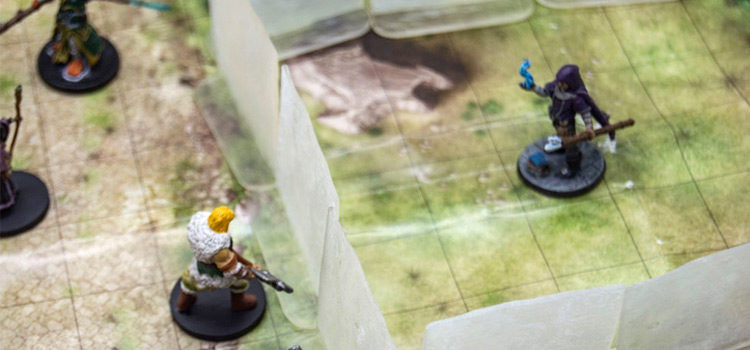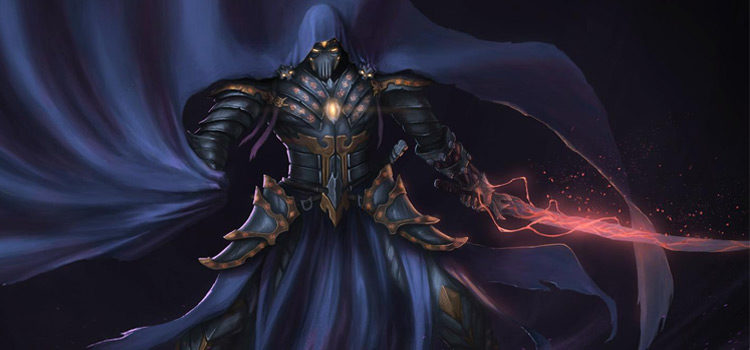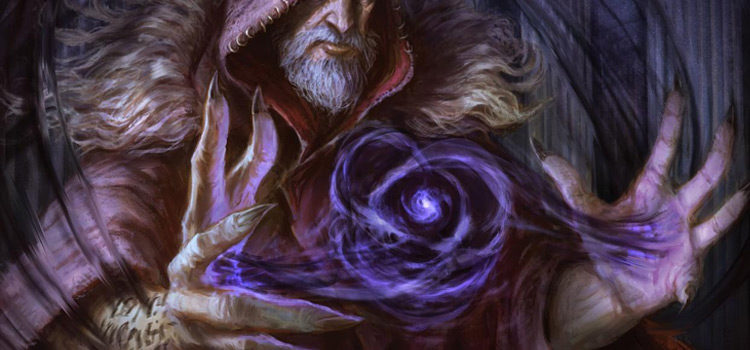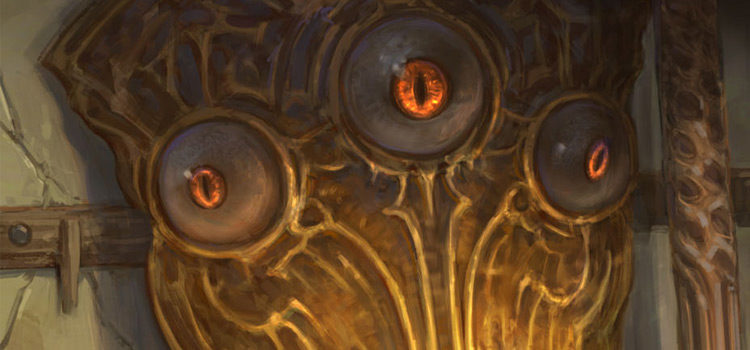Temporal Shunt: D&D 5e Spell Guide
This post may contain affiliate links. If you buy something we may get a small commission at no extra cost to you. (Learn more).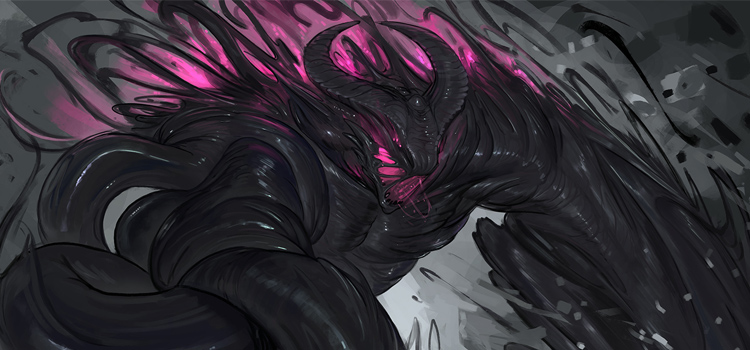
While the dunamancy spells in Explorer’s Guide to Wildemount can be a bit difficult to get ahold of, they’re also extremely fun.
Let’s take a deeper look at one of the higher-leveled spells from the book: temporal shunt.
Temporal Shunt Spell Details
Type: 5th Level Transmutation
Casting Time: One Reaction (done in response to an attack roll or or a spell beginning to be cast by a creature you can see)
Range: 120 Feet
Components: V, S
Duration: 1 Round
The creature that made the attack roll or started casting a spell has to make a Wisdom save, or effectively be banished one round into the future. The target has no idea that you sent it into the future.
If it was making an attack, it misses.
If it was casting a spell, it’s wasted and has no effect.
The creature reappears at the beginning of its next turn, either in the same spot it vanished from, or the nearest space if something has moved into their old space.
When you cast the spell with a higher-levelled spell slot, you get to throw an extra creature one round into the future at the same time. You can temporally displace one extra creature for each level of spell slot you use higher than 5th.
Who Gets It?
Like sapping sting and the rest of the dunamancy spells from Explorer’s Guide to Wildemount, the answer to this question ranges from “very few people” to “pretty much anyone.”
Because of the unique rules for dunamancy spells, temporal shunt is only automatically available to wizards who choose the Arcane Traditions of Chronurgy or Graviturgy.
There is a sidebar in Explorer’s Guide to Wildemount that details how characters from different classes could get access to it. For the most part, this consists of a DM potentially doling out a few dunamancy spells as quest rewards or loot.
Ultimately, it depends on whether or not you can convince your DM to let you learn it. Like sapping sting, there are a few ways you might be able to get ahold of it, if your DM is willing to play ball.
You might be allowed to select it using a bard’s Magical Secrets feature. Otherwise, you might need to “invent” the spell, or learn it as some kind of alternative quest reward.
Temporal Shunt vs. Counterspell
Temporal shunt draws a lot of comparisons to counterspell, which makes sense.
Both spells allow you to cancel out an opposing spellcaster’s magic.
It’s always a good feeling when the boss unleashes some powerful cone of cold, or disintegrate, or power word kill, only to be countered by a desperate reaction spell from your party spellcaster.
There are pros and cons to each of the two spells, which may change how you’d like to use them in combat. But both are fantastic.
Wisdom Save vs. Spellcasting Ability Check
Unlike counterspell, temporal shunt ignores the level of the spell (or attack) that allows you to take this reaction. All that matters is the target’s Wisdom saving throw… which is a mixed bag.
While this is a fun spell to drop, the type of creature you’re likely to use it on will vary as you level up.
When you first get this spell, you won’t have many 5th level spell slots to throw around.
That means you might want to save temporal shunt to use on a boss. Unfortunately, many powerful monsters will have Legendary Resistances they can use to cancel out this spell.
Even if a legendary monster burns all of its Legendary Resistances, there’s still a chance it could fail. Lots of powerful monsters have high Wisdom saving throws.
At higher levels, it’s a little easier to let yourself use this spell on a weaker monster that serves as a boss’ backup. Or on a decently powerful (but not legendary) creature that you end up fighting.
On the other hand, counterspell relies on ability checks, which can’t be easily cancelled out by Legendary Resistances.
Debuffing vs. Buffing
Both temporal shunt and counterspell can be helped by other effects.
Anything that hurts a creature’s Wisdom saving throw will be helpful for temporal shunt.
Example: bestow curse can grant disadvantage on a particular saving throw, mind sliver can subtract a d4 from a save, and the Blinding Sickness disease from the contagion spell can also hinder Wisdom saves.
Pretty much anything that hurts a save can come in handy here.
The downside is that many of those features don’t simply happen. They require further saves that an enemy has to fail on.
That contrasts with counterspell, which thrives on receiving buffs from other characters. Anything that adds or modifies an ability check is helpful here.
That includes the bard’s glibness spell, Bardic Inspiration, the Jack of All Trades feature, the Abjuration wizard’s Improved Abjuration feature, guidance, inspiration, or the Wild Magic sorcerer’s Tides of Chaos or Bend Luck abilities.
Anything that gives advantage or boosts an ability check helps, and there’s a lot of those features.
Ultimately, that makes it easier to buff counterspell than help set up a temporal shunt.
Upsides to Temporal Shunt
Temporal shunt has some unique features that can make it preferable to counterspell.
While both spells can be counterspelled in return, temporal shunt has a much longer range. That range lets you stay further back from the triggering spellcaster or attacker, and gives them less of an opportunity to counter your spell.
Assuming they don’t also know the temporal shunt spell.
It’s also a 5th level spell, which means that you don’t have to upcast it to prevent a quick 3rd-level counterspell from immediately cancelling it out.
Granted, enemy creatures could always upcast their counterspells. So your best bet is staying safely further than 60 feet from the target.
The ability to target multiple creatures at higher levels is helpful too. It means that the spell may not be totally wasted, even if one of the targets saves against it.
Being able to counter attacks is nice as well. It means you’re more likely to be able to use it on non-casters.
Unfortunately, it doesn’t prevent some powerful monsters from using abilities that trigger saving throws. It won’t come in handy against a dragon’s breath weapon or a kraken’s lightning storm.
The primary benefit is how the spell banishes a target forward in time.
That displacement allows for some fun tricks you can pull, so let’s get into how to use temporal shunt to its fullest potential.
Temporal Shunt: Tips and Tricks
Darkest Timeline
You know that gif from Community where Donald Glover walks back into a room carrying pizza, only to find the entire place on fire?
That is ideally how you want your target to feel after getting shunted into the future.
When temporal shunt works, you (hopefully) have a full round to do whatever you want before the displaced creature returns.
This might not apply if you used temporal shunt to counter a Legendary Action or some sort of reaction attack. Which is why it’s best to use the spell during the target’s actual turn.
The simplest strategy here is to have everyone in the party ready an action to attack, or cast a spell the moment your enemy reappears.
This gives your rogues time to Hide with their Cunning Action, for your fighters to get into position, or even for your spellcasters to lay down damaging or debilitating area of effect spells for the displaced creature to land in.
The moment the creature comes back, it gets hit on all sides by attacks and spells.
Change the Terrain
When the target of temporal shunt returns, it comes back to the same place it left from, unless that space is occupied.
Unlike some other spells, temporal shunt says nothing about dangerous terrain, which means you have 1 round to make that spot as dangerous as possible to stand on.
This will vary widely depending on what you’re fighting and where you’re fighting it.
If the creature was standing on a small column of rock over a pit of lava, now is a great time to break that column. Assuming the creature you’re fighting can’t fly. With any luck, it returns where it was sent from, then drops down to a fiery death below.
The same applies if you’re standing on a platform high above the ground.
If there’s a trap you can move into position, or some other kind of danger, you can lay that down as well.
Any effects that happen when a creature enters a certain area or starts its turn there can be useful too.
Imagine shunting something into the future, only for it to return, immediately fall, and then slam directly into all seven layers of a prismatic wall.
When used cleverly in a situation that allows you to, temporal shunt can be the death knell for a boss monster.
Occupying That Space
If the space the target vanished from is occupied, it returns in the closest unoccupied space.
This means a bit of clever maneuvering can force a target into a space you want it in.
If it was standing next to a blade barrier or some other dangerous area of effect, you can force it into that area by making sure the closest unoccupied space is that area.
This may depend a little on the DM and how they define ‘unoccupied’. But generally it means unoccupied by a creature or physical object, not a spell effect.
You may need multiple people to make sure the closest unoccupied space is where you want the target to come back to.
Spells like animate objects or conjure animals are great for that. By bringing a lot of new creatures to the field, you can block off certain areas.
Some of them might even be in position to ready an action to attack when the shunted target comes back. Just make sure that the effect you’re trying to get the target to land in goes off at the beginning of their turn.
Blade barrier deals damage at the start of a creature’s turn.
Dawn deals damage when a creature ends its turn in the area.
While end-of-turn damage is nice, it’s better not to give the shunted creature a chance to leave the area, if you can.

